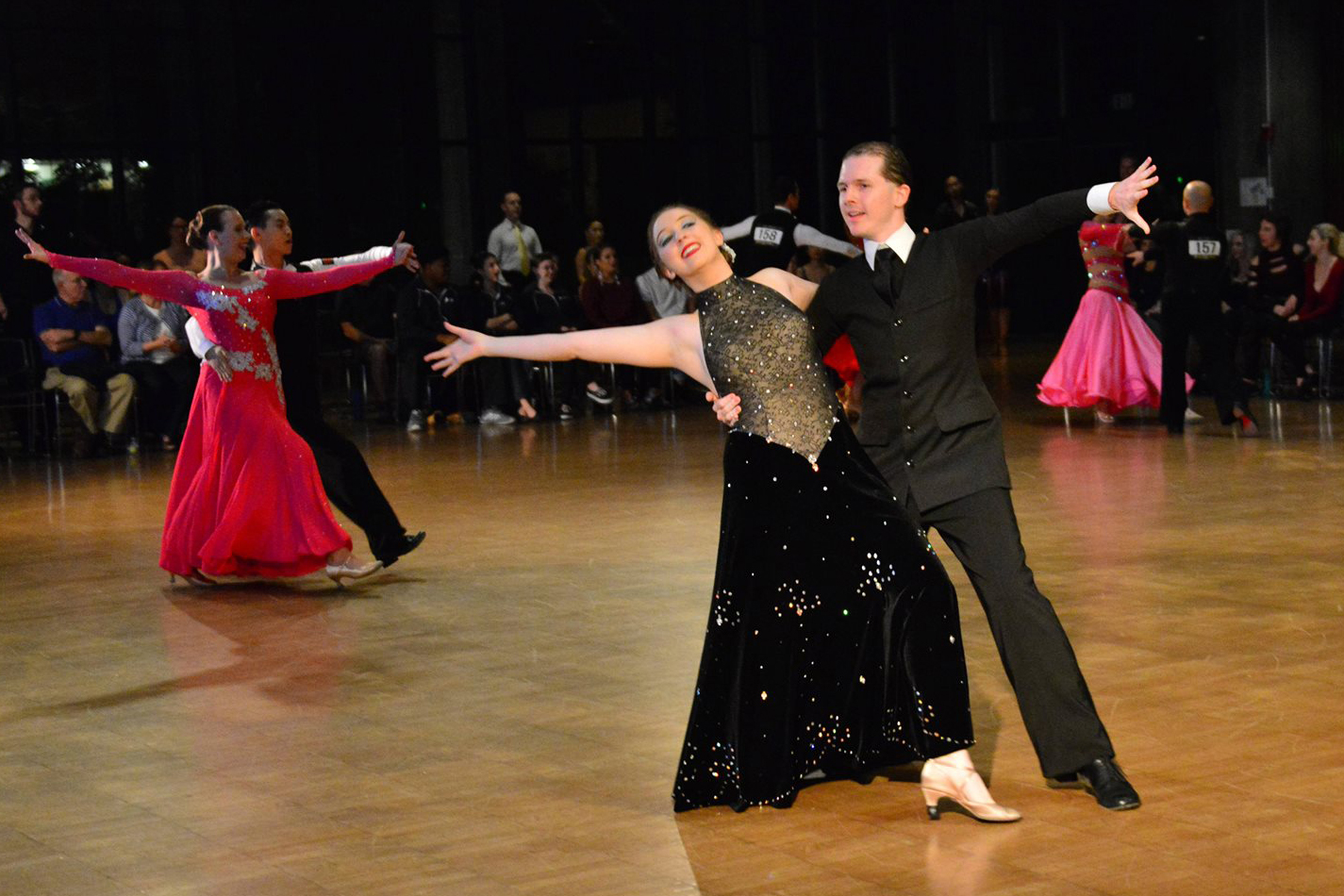“Something we tell our new people is a warning that you shouldn’t date your dance partner. So, here’s the thing: this used to be followed all the time. When I got here, nobody was dating anybody on our team, and this is out of 50 people on the dance team – I don’t know the real number – and about 20 competitors…wait, I take it back. There was one couple: Nick and Claire. Nick and Claire were dating, but nobody else was dating. Nick and Claire came in as a couple already, and so they became dance partners. They didn’t dance together for everything, though they did dance together for some things. What we don’t like is when people meet through the ballroom dance team, dance with each other for a while, and then say, ‘You know what? I’mma date you.’ This happens in the professional world a lot. Professional dancers, they’re usually 16-17 years old – they’re young – when they meet each other. Well, sometimes they’re 23-24 years old when they meet each other, but usually it’s fairly young, and they dance with each other for a while. Whatever the exact age, they’re young, and they’re all kinds of hormonal, and they’re dancing with a very attractive person, these professionals. ‘I’m hormonal. I’m dancing with a hot person, and this hot person knows how to use their body. Yes, I’m going to try to make something out of this,’ and they do, all the time. They get married sometimes, and then they divorce each other. It almost always happens. I mean, there are a few cases where it doesn’t happen – they’ve learned how to make it work – but it’s usually a disaster in the professional world to date your dance partner, because you break up, and then you can’t dance together anymore, and the you gotta go find a new partner, but you’re older, and everybody’s already taken. Then, your career is done. So, finding somebody you click with is important, and then not trying to have sex with that person is equally important once that first part is done. On our team, we recommend the same thing. If you have a dance partner, that’s great. Work really hard to not date them or try to be more than friends with them, because if you do, when you try, it’s an easy way to lose a dance partner. So, it’s a little odd that we had a lot of people over the last two or three years end up dating the people that they dance with. Sometimes, they started to dance with the people that they’re dating. That happened to me. That happened to…actually, I think that happened to most people. They met first, started dating, and then said, ‘hey, we’re going to dance together.’ Usually, we’re still pretty good about being like, ‘We’re going to dance together. Oooh, I like you. Let’s do this thing.’ It’s easier when you go from dating to dance partners than from dance partners to dating, but it still carries risks, so we advise people to treat your dance relationship like your regular relationship: talk about things and seek help from others when you need it.”
Background Information and Context:
What the informant is describing is based on his years of experience on the SC Ballroom and Latin Dance Team. There is no way to say – at least, not without surveying members of multiple dance teams – whether the phenomenon of having a lot of couples on a dance team is exclusive to the SC Ballroom and Latin Dance team or, if it is not exclusive, if the couples on other dance teams act like those on USC’s team. Although, I have heard similar advice of being wary of the person with whom you start a relationship in other teams and in other contexts, such as work. This part of our conversation was more personal in nature than the topics that preceded, and I was mildly surprised that the informant, for the most part, kept his personal opinions out.
Collector’s Notes:
What was interesting about this topic is that I hadn’t originally intended to ask about it but noted to the informant that I found it odd that both of us are dating our dance partners. I’d heard the general opinion that dating your dance partner leads to unnecessary complications in both the romantic and dance relationship, but still, nobody dissuaded me when my boyfriend first asked me out, months after we’d started talking about becoming competition partners. On our team, there didn’t seem to be any negative examples of such a relationship to make me worry beyond the passing thought. I think it’s interesting that dancing, especially ballroom dancing, is heavily romanticized, and performers are criticized if their dance lacks passion, romance, tenderness, etc., but actual romance, specifically a new romance, is met with wariness. Moreover, it is interesting that popular media so often portrays romance/attraction and drama/angst as inextricable from each other. The connotations of dancing and romance seem at odds with each other.

